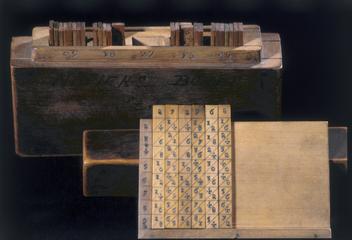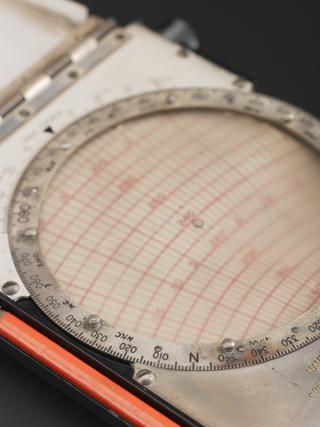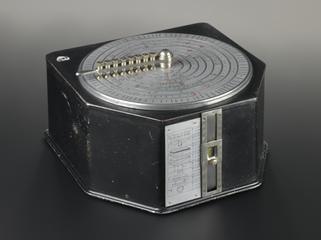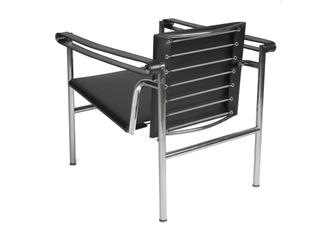Set of 7 assembled cardboard geometrical models with wooden stands [marked 1876-482], showing surfaces of the second order: (1) Ellipsoids having 22 sections, (2) Ellipsoids having 30 sections, (3) Hyperboloids of 2 sheets, (4) Hyperboloids of 1 sheet, (5) Paraboloids, (6) Hyperbolic Paraboloids, (7) Cones
Set of 7 assembled cardboard geometrical models on wooden stands showing the following surfaces of the second order: 1) ellipsoid with 22 sections 2) ellipsoid with 30 sections, 3) hyperboloid of 2 sheets, 4) hyperboloid of 1 sheet, 5) paraboloid, 6) hyperbolic paraboloid, 7) cone of two sheets. These cardboard models were made by Martin Schilling at the Munich Workshop set up by Felix Klein (1849-1925) and Alexander von Brill in the 1870s to produce a wide variety of surface models. 'Second Order' means there are squared terms in their equations. This type of model could be distorted into an infinite number of shapes by gentle manipulation. During the late 19th and early 20th century, there was an interest in geometric model making, particularly in Germany.









